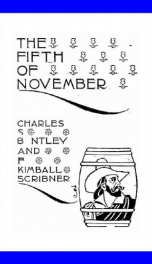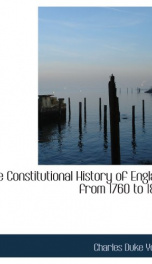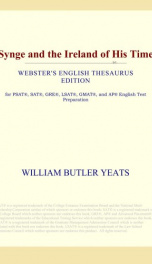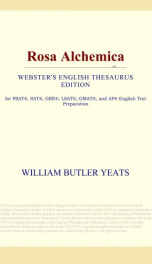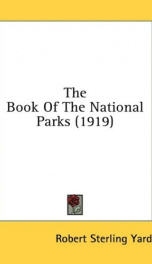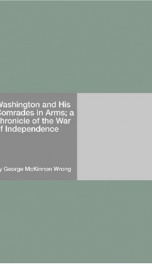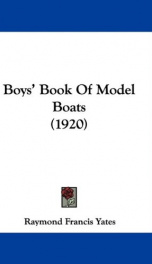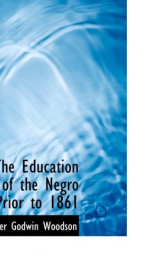Yates Dornford
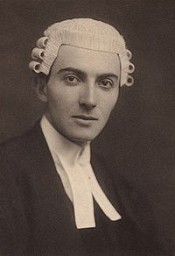
Dornford Yates was the pseudonym of the British novelist, Cecil William Mercer (7 August 1885 – 5 March 1960), whose novels and short stories, some humorous (the Berry books), some thrillers (the Chandos books), were best-sellers in the twenty-one year interwar period between the First and Second world wars. The pen name, Dornford Yates, first in print in 1910, resulted from combining the surnames of his grandmothers — the paternal Eliza Mary Dornford, and the maternal Harriet Yates. William (Bill) Mercer was born in Walmer, Kent, the son of Cecil John Mercer (1850–1921) and Helen Wall (1858–1918). His father was a solicitor whose sister, Mary Frances, married Charles Augustus Munro; their son was Hector Hugh Munro (the writer Saki); Bill Mercer is said to have idolised his elder cousin. Mercer attended St Clare preparatory school in Walmer from 1894 to 1899. The family moved from Kent to London when he joined Harrow as a day boarder in 1899, his father selling his solicitor’s practice in Kent and setting up office in Carey Street. Leaving Harrow in 1903, he attended University College, Oxford in 1904 where he achieved a Third in Law. At university, he was active in the Oxford University Dramatic Society (OUDS), becoming secretary in 1906 and president in 1907, his final year. He acted in the 1905 production of Aristophanes’ The Clouds, of which the Times reviewer said: “Among individual actors the best was Mr. C.W. Mercer, whose ‘Strepsiades’ was full of fun, and who possesses real comic talent.” [1] After a small part in the 1906 production of Measure for Measure, in his final year, he appeared as ‘Demetrius’ in A Midsummer Night's Dream, and as ‘Pedant’ in The Taming of the Shrew, [2] the production included the professional actresses Lily Brayton as ‘Katherine’, and her sister Agnes as ‘Bianca’. [3] [4] Among the many useful friends Mercer made in the OUDS were Gervais Rentoul, who asked him to be his best man, [5] and Lily Brayton's husband, actor Oscar Asche, later producer of the play Kismet, and writer of Chu Chin Chow. After university, Mercer took a caravanning holiday in Hampshire, with Asche, Lily, Agnes, and another theatrical couple, Matheson Lang and his wife, Hutin Britton; Asche and Lang recall that holiday in their respective memoirs. [6] [7] Mercer’s third-class Oxford law degree was insufficient to gain him traditional access to the bar. However, in 1908 his father obtained his son a post as pupil to a prominent solicitor, H.G. Muskett, whose practice often required his appearing in court on behalf of the police commissioner. As Muskett’s pupil, Mercer saw much of the seedy side of London life, some of which is evident in his novels. In 1909, he was called to the bar where he worked for several years. In his first memoirs, As Berry & I Were Saying, he recalls his involvement in the trial of the poisoner Hawley Harvey Crippen, when he returned from acting with the Old Stagers, at Canterbury, to have first look at the legal brief. Mercer is in a photograph of the Bow Street Court committal proceedings, published in the Daily Mirror of 30 August 1910. In his spare time, he wrote the short stories published in Punch, The Red Magazine, Pearsons Magazine, and the Windsor Magazine, maintaining a relationship with this last until the end of the 1930s. He also assisted in the writing of What I Know, the memoirs of C.W. Stamper, who had been motor engineer to King Edward VII. At the outbreak of the Great War in 1914, Mercer joined the County of London Yeomanry and was commissioned as Second Lieutenant. In 1915, his regiment left for Egypt and, in November 1915 as part of the 8th Mounted Brigade, he was sent to the Salonika/Macedonian front where the war was in stalemate. Suffering severe muscular rheumatism he was sent home in 1917 and, although he was still in uniform, the War Office did not again post him. He eventually left the army in 1919. Since 1914, the Mercer family home had been “Elm Tree Road” in St John's Wood, where his friends Oscar and Lily Asche were close neighbours. In autumn of 1919, he and Asche combined to write the stage show Eastward Ho!, but the production was not a great success and he did not again attempt to write for the stage. A frequent social - and then romantic - Elm Tree Road visitor was Bettine (Athalia) Stokes Edwards, an American girl in the Chu Chin Chow cast (and daughter of Robert Ewing Edwards of Philadelphia, Pennsylvania) who became Mercer’s first wife. [8] The New York Times announcement of their engagement (28 August 1919) states: “Mr & Mrs Glover Fitzhugh Perin of 57 West Fifty-eight street have announced the engagement of Mrs Perin’s oldest daughter Miss Bettine Stokes Edwards. . . .” suggesting that her father either was dead or divorced; her re-married mother then lived in New York City. Mercer and Bettine married at St James, Spanish Place, in the Marylebone district of London, on 22 October 1919. Mercer decided to not return to the bar, and to concentrate on his writing. He and Bettine lived in Elm Tree Road, where their only child, Richard, was born on 20 July 1920. After the Great War, many ex-officers found that the rise in the cost of living in London precluded maintaining the style of life of a gentleman to which they had become accustomed; some looked beyond England. In 1922, the Mercers emigrated to France, where it was possible to live more cheaply, and where the climate was kinder to Mercer’s muscular rheumatism. They chose the resort town Pau, in the western Pyrenees, in the Basses–Pyrénées département (now Pyrénées-Atlantiques) — where lived a sizeable British expat colony, but when the Mercers moved in is unknown. In Dornford Yates — A Biography (1982), A.J. Smithers [9] reports “exactly how he hit upon the place is not clear”, but Pau figures several times in the memoirs he is presumed to have ghost-written for C.W. Stamper, and so that might be the answer — “anywhere good enough for King Edward VII was good enough for him”. They rented the Villa Maryland, on Rue Forster, where Mercer proved an exacting husband, while Bettine was a social woman, and by 1929, the failure of their marriage was evident. Bettine had been indiscreet in her extra-marital romantic liaisons, and Mercer sued for divorce. Bettine did not defend, and the divorce was made absolute in September 1933. In the event, she returned to her family in the U.S. Less than a year later, on 10 February 1934, at Chertsey Register office, Bill Mercer married Doreen Elizabeth Lucie Bowie, whom he met on a cruise in 1932. She was daughter of London solicitor D.M. Bowie of Virginia Water. [8] Elizabeth was twenty years younger than her new husband, who felt he had met the incarnation of his fictional “Jill Mansel”, thus did he call her “Jill” for the rest of his life. For him, Villa Maryland had many memories of Bettine, so he and Elizabeth decided to build a new house, named “Cockade”. They chose a spot twenty miles south of Pau, near Eaux-Bonnes, on the route to the Spanish frontier, the project is related in The House That Berry Built, wherein the name of the house is “Gracedieu” (God’s Grace). They did not enjoy long residence in Cockade. With France falling to the Wehrmacht in June of 1940, the Mercers hurriedly arranged caretakers for Cockade, and then escaped the country — in company of visiting friends, Matheson Lang and wife — and traversed Spain en route to Portugal. They subsequently took ship for South Africa, arriving in Salisbury, Southern Rhodesia, in 1941.[10] C.W. Mercer was re-commissioned in the Royal Rhodesian Regiment, and attained the rank of major. As the war concluded, the couple realised their plan of returning to Cockade — but were disappointed in the decrepitude of the house and the socially-conscious, post-war attitude of their one-time servants. After some months, the Mercers obtained exit visas and returned to Umtali, Southern Rhodesia, (now Mutare, Zimbabwe), where they lived for the rest of his life. Mercer supervised the building of a replacement house for Cockade, another hillside venture, and, in 1948, they moved into “Sacradown”, on Oak Avenue. The furniture in France was shipped to Rhodesia, as were the Waterloo Bridge balusters (see The House that Berry Built), which had never reached Cockade, but had been stored in England during the Second World War. Cecil William Mercer died in March 1960. Mercer originally wrote short stories for the monthly magazines; many of his works began as stories in the Windsor Magazine, before being collected in book form. His first known published work, Temporary Insanity, appeared in Punch in May 1910 - this is the first known occasion of his use of his pen name - and his second, Like A Tale That is Told appeared in the Red Magazine in July 1910. The first known Berry story to be published, Babes in the Wood, appeared in Pearsons Magazine in September 1910. None of these early stories was ever included in his books. His first story for the Windsor Magazine was Busy Bees, in 1911, and this, and subsequent stories, from that publication were republished in book form as The Brother of Daphne, in 1914. Some of the stories were edited for the book, to eliminate events, such as marriage, for the leading characters — which suggests that, originally, he had not planned on using the same characters for a story series. The narrator — later identified as “Boy Pleydell” — marries in both Babes in the Wood and in Busy Bees, which became The Busy Beers, a chapter in The Brother of Daphne, with the end of the story altered to leave him unmarried. For the stories composing his second book, The Courts of Idleness, Yates initially introduced a new set of characters similar to, but separate from, Berry & Co, but then killed off the male characters in Salonika, during the Great War; the second half of the book returns to the Berry characters. The book’s final story, Nemesis, was written for, and rejected by, Punch; subsequently, it appeared in the Windsor Magazine in November 1919, with the main character named “Jeremy”; for the book he became “Berry”. Nemesis was written to the Punch length, and so is much shorter than most of the other stories in The Courts of Idleness.
do you like this author?
What readers are saying
What do you think? Write your own comment on this book!
write a commentWhat readers are saying
What do you think? Write your own comment on this author!
write a commentBook list

Berry And Co.
Series:
Unknown
Year:
Unknown
Raiting:
3/5
At the foot of the steps the great smooth lawn stretched like a fine green carpet its shadowed patches yet bright with dew. There were the tall elms and the copper beech and all the proud company of spreading giants¿what were five years to them?' (Excerpt from Chapter 1) --This text refers to an alternate Paperback edition.
Show more
add to favoritesadd In favorites
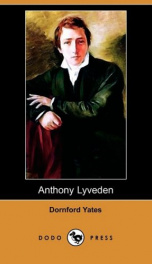
Anthony Lyveden
Series:
Unknown
Year:
Unknown
Raiting:
3/5
Dornford Yates was the pseudonym of the British novelist Cecil William Mercer (1885-1960). His novels and short stories, some humourous and some thrillers were best-sellers in the period between the two World Wars. Mercer was called to the bar in 1909 and worked there for several years. After the outbreak of the First World War in 1914, he joined the County of London Yeomanry and was commissioned Second Lieutenant. Yates originally wrote short stories for the monthly magazines, and many of his works began as stories in the Windsor Magazine before being collected together in book form. However, his first known published work, Temporary Insanity, appeared in Punch in May 1910, and his second, Like a Tale that is Told appeared in the Red Magazine in July 1910. Amongst his other works are The Brother of Daphne (1914), The Courts of Idleness (1920), Berry and Co. (1921), The Stolen March (1926) and Blind Corner (1927).
Show more
add to favoritesadd In favorites
What readers are saying
What do you think? Write your own comment on this author!
write a commentif you like Yates Dornford try:
readers also enjoyed
What readers are saying
What do you think? Write your own comment on this author!
write a commentGenre
if you like Yates Dornford try:
Do you want to exchange books? It’s EASY!
Get registered and find other users who want to give their favourite books to good hands!

